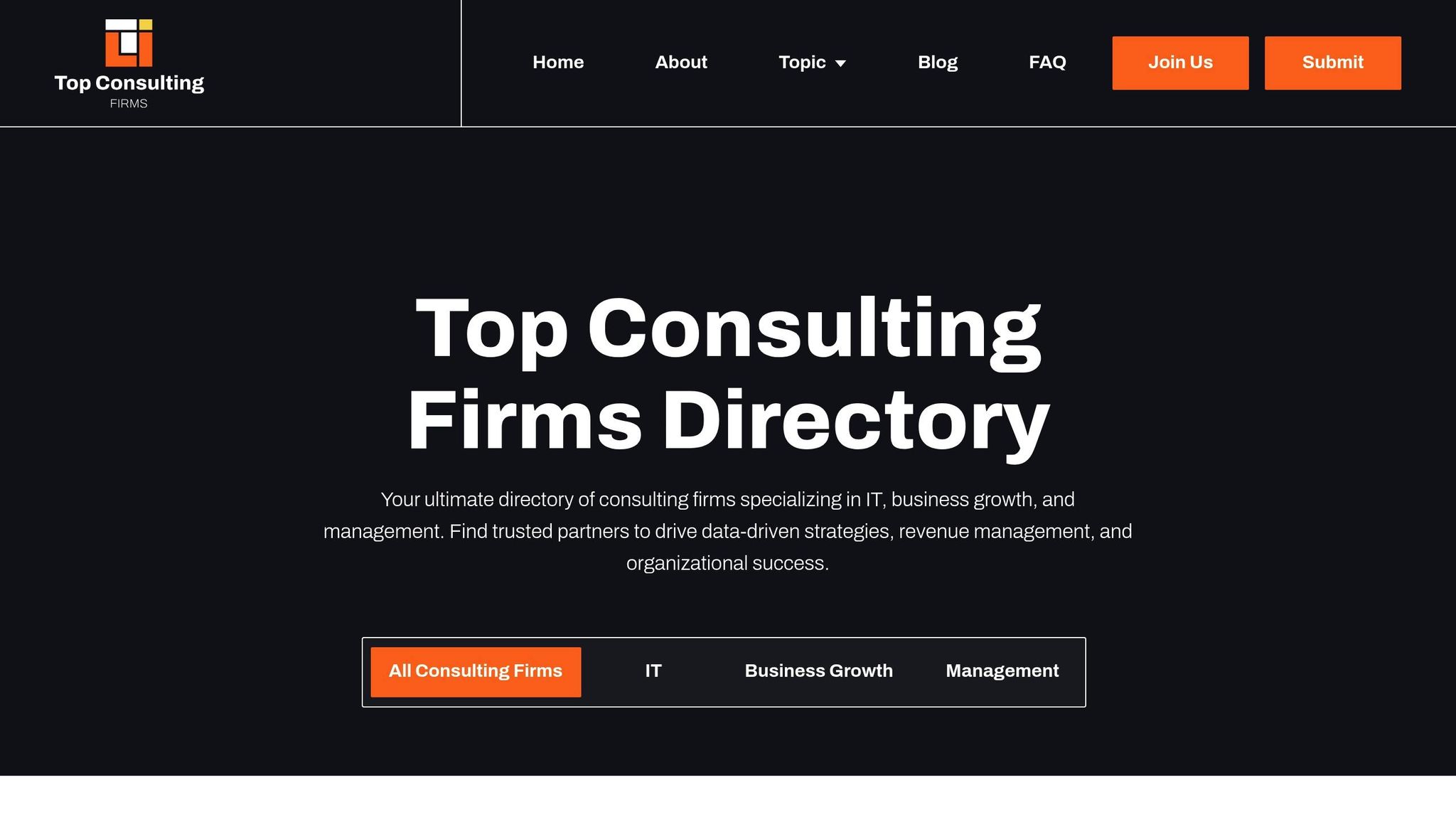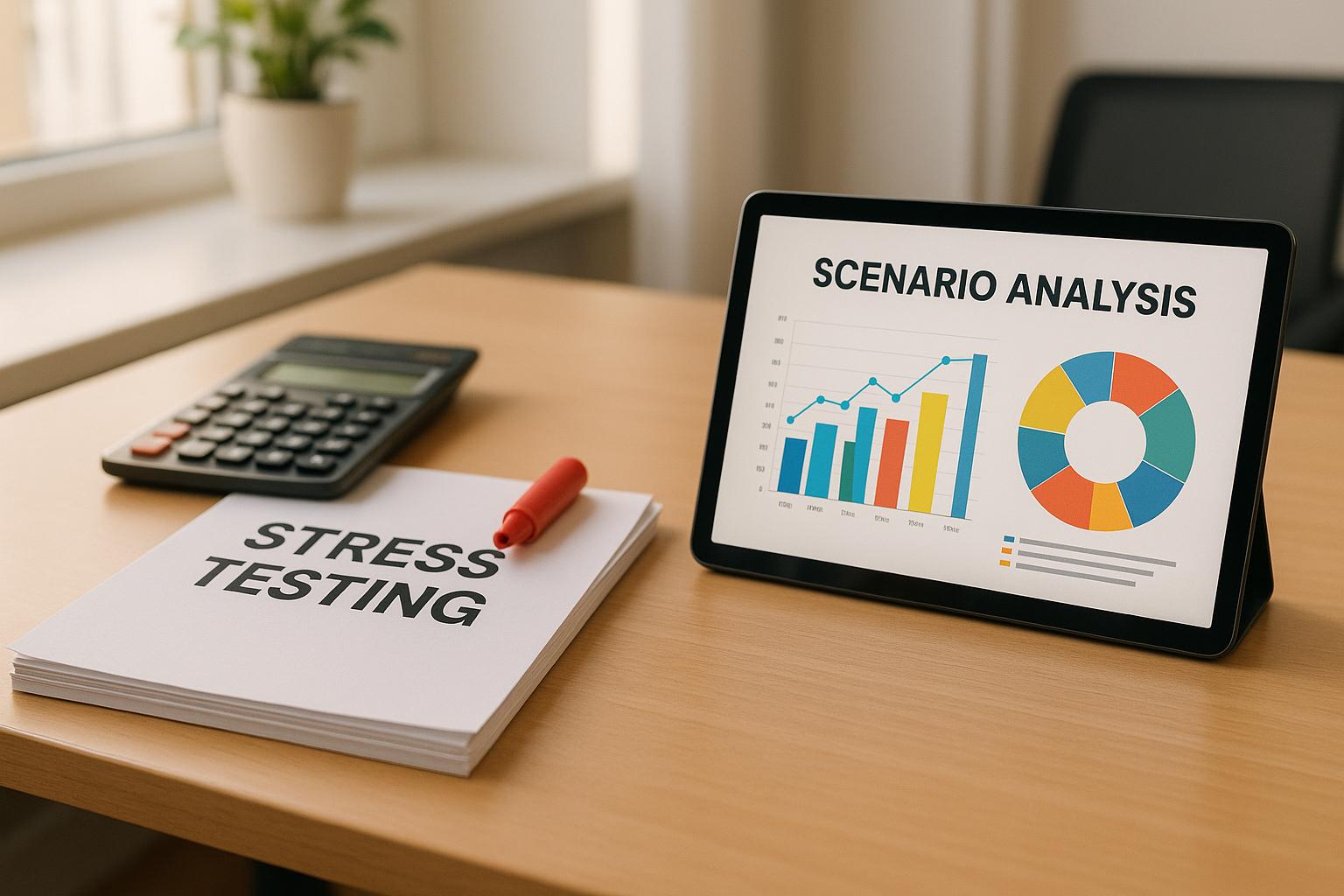Building a risk governance framework is about creating a system to identify, assess, and manage risks while aligning these efforts with your organization's goals. Here's what you need to know:
- What is it? A risk governance framework is a structured approach combining risk identification, mitigation, monitoring, and communication to manage uncertainties effectively.
- Why does it matter? 48% of companies lack formal governance, leading to inefficiencies, compliance risks, and potential financial or reputational harm.
- Key steps:
- Benefits: Better compliance, decision-making, and resilience against risks like cyberattacks, operational failures, or regulatory penalties.
A well-structured framework ensures risks are monitored and managed consistently, reducing vulnerabilities and supporting long-term success.
What is Governance Risk Management Framework?
Key Components of a Risk Governance Framework
Crafting an effective risk governance framework involves three critical components that help anchor an organization’s approach to managing uncertainty. These elements are essential for aligning risk strategies with business goals and navigating challenges effectively.
Risk Culture and Awareness
At the heart of any successful risk management effort lies a strong risk culture. According to the Institute of Risk Management, risk culture refers to "the values, beliefs, knowledge, attitudes, and understanding about risk shared by a group of people with a common purpose". A well-developed risk culture encourages informed decision-making and rewards thoughtful risk-taking.
Interestingly, 52% of risk managers identify risk appetite as a crucial factor, while 27% see it as a key priority. Yet, many organizations stumble in execution, often underestimating how deeply culture influences risk management.
Building this culture requires commitment across all levels of the organization. Leadership must set the tone by modeling a balanced approach to risk and reward in their decision-making. Risk management should be viewed as a collective responsibility, not just the domain of a specialized department.
Practical steps include conducting workplace risk assessments to uncover strengths and areas for improvement. From there, organizations can develop training programs to make risk management concepts accessible to everyone. Positive reinforcement is vital – recognize employees who identify and report risks, and tie risk management to performance goals to encourage accountability.
Combining education with clear policies and effective tools helps create a responsive and engaged risk-aware culture. This foundation promotes transparency, adaptability, and a proactive mindset - qualities that are indispensable in today’s complex business landscape.
Once this cultural groundwork is in place, organizations can move on to defining specific risk parameters, such as appetite and tolerance.
Risk Appetite and Tolerance
Defining risk appetite and tolerance provides the guardrails for strategic decision-making. Simply put, risk appetite reflects the level of risk an organization is willing to pursue, while risk tolerance defines the boundaries of acceptable risk deviations.
Jill Douglas, Head of Risk at Charterhouse Risk Management, puts it succinctly: "The risk appetite statement is generally considered the hardest part of any enterprise risk management implementation. However, without clearly defined, measurable tolerances, the whole risk cycle and any risk framework is arguably at a halt".
Senior leadership and the board of directors must take ownership of these parameters, ensuring they align with the organization’s overall strategy and responsibilities.
Several factors shape these limits. For risk appetite, consider the nature of your industry, your organizational culture, the aggressiveness of your goals, and your financial stability. For risk tolerance, think about your financial capacity, past experiences with risk events, regulatory obligations, cybersecurity readiness, and operational capabilities.
Key Risk Indicators (KRIs) play a crucial role in monitoring adherence to these parameters. These metrics provide early warnings when risks approach or exceed acceptable levels, helping organizations stay proactive in managing potential issues.
Once established, ongoing monitoring ensures these limits remain relevant and effective over time.
Risk Monitoring and Continuous Improvement
Risk governance doesn’t stop at implementing policies - it requires ongoing vigilance and regular updates to stay effective in a changing environment.
Continuous monitoring allows organizations to track risks, assess the effectiveness of mitigation strategies, and identify emerging threats. This process should be an integral part of daily operations rather than treated as a periodic task. Without proper oversight, organizations risk unintentionally engaging in activities that contradict their stated policies.
An effective monitoring system should use both quantitative measures (like financial impacts, incident rates, and compliance metrics) and qualitative insights (such as cultural assessments, stakeholder feedback, and an understanding of new risks). This dual approach provides a clearer picture of not just the risks themselves, but also the organization’s readiness to address them.
To stay ahead, organizations should schedule regular reviews of their risk management processes. These reviews help identify gaps, refine strategies, and ensure alignment with current objectives. Key areas to evaluate include the appropriateness of the risk appetite, necessary adjustments to tolerance levels, and the progress of cultural development.
Feedback loops are another essential component. By learning from past risk events, organizations can fine-tune their approach and build resilience. Appointing Risk Champions from different departments can further enhance this process, as they bring diverse perspectives and help drive improvements across the organization.
The ultimate goal is a dynamic risk governance system that evolves with changing circumstances while staying aligned with strategic priorities and the expectations of key stakeholders, including regulators, shareholders, and clients.
Step-by-Step Guide to Creating a Risk Governance Framework
Once you’ve assessed your current practices and identified stakeholder needs, it’s time to take a structured approach to building your risk governance framework. This involves transitioning from reactive to proactive risk management through three interconnected phases that work together to create a solid system.
Assess Current Risk Practices and Objectives
Before diving into new processes, it’s essential to take stock of where your organization currently stands. Start by reviewing your existing risk management policies, practices, and resources. Go through past risk assessments, incident reports, and compliance documents - this will help you spot gaps, redundancies, or overlooked areas.
Next, evaluate how effective these practices have been. Look at past risk events and analyze whether issues were identified early or only after they escalated. Also, assess your organization’s current capacity - both in terms of people and technology - for managing risk effectively.
Understanding your organization’s risk culture is just as important. Use surveys to gauge employees’ knowledge of risk management principles and their willingness to report potential issues. Comparing your practices to industry standards can also provide context and help you set achievable goals.
Aligning risk management with your business objectives is the next step. Review your strategic goals and identify the risks tied to each one. For instance, if international expansion is on the horizon, think about regulatory, operational, and other risks that might come with it.
"Alignment is a force multiplier." – Gereon Hermkes
At this stage, define your organization’s risk appetite and develop Key Performance Indicators (KPIs) that align with your goals. This ensures your risk management efforts are focused on the challenges that could significantly impact your objectives.
With a clear understanding of your current practices, you’re ready to bring stakeholders on board to help shape the framework.
Engage Stakeholders and Define Governance Roles
For risk governance to succeed, you need strong stakeholder engagement. Even the most well-designed framework can fall short without support from key players.
Start by identifying all relevant stakeholders. This typically includes senior leadership, department heads, frontline employees, IT teams, and external partners. Conduct one-on-one meetings to hear their concerns and gather their input. These conversations can build trust and uncover risks that might not be visible from a higher-level perspective.
Once stakeholders are engaged, define clear governance roles and responsibilities. Determine who will make decisions, implement controls, monitor compliance, and handle reporting. Assign responsibilities to roles rather than individuals to ensure continuity if personnel changes occur.
Develop a communication plan to keep stakeholders informed and involved. Use a mix of channels - such as email updates, in-person meetings, and dashboard summaries - to ensure everyone stays on the same page. This two-way communication fosters a sense of shared responsibility for risk management efforts.
Document Policies and Implement Controls
With input from stakeholders, formalize your risk governance framework by documenting policies and procedures. These policies should be clear and actionable, serving as a practical guide for daily operations.
Write policies in straightforward language to ensure they’re easily understood by employees at all levels. Avoid technical jargon or overly complicated explanations that could lead to confusion.
Clearly outline required actions and the documentation process to simplify compliance monitoring. Include a process for handling exceptions, as real-world scenarios often don’t fit neatly into predefined rules.
Map your controls to relevant regulatory frameworks and ensure your record-keeping systems support compliance. Assign accountability for implementation to specific teams or roles, and break the process into manageable phases with clear milestones to keep progress on track.
Regularly monitor how well the framework is being followed, and update it based on new risk assessments, gap analyses, or changes in your business or regulatory environment. Address any gaps in your practices based on their potential impact and urgency to ensure your organization stays ahead of potential risks.
sbb-itb-97f6a47
Aligning with Frameworks, Standards, and Regulatory Requirements
Once your policies are documented and controls are in place, the next step is aligning your risk governance framework with established standards and regulatory requirements. This alignment not only enhances trust but also helps you sidestep costly compliance pitfalls. It also lays the groundwork for selecting the risk management framework that best suits your organization.
Overview of Leading Frameworks
There are several widely recognized frameworks that can guide your risk governance strategy. Each offers distinct advantages depending on your industry and organizational needs.
COSO ERM (Enterprise Risk Management) connects risk management directly to strategic goals and performance. This framework is particularly beneficial for U.S.-based organizations, as it emphasizes integrating risk considerations into decision-making and long-term planning.
ISO 31000 provides a flexible, principle-driven approach that works across various industries and risk areas. As an international standard, it offers a globally respected method to ensure your risk management remains systematic, transparent, and effective.
The growing importance of these frameworks is reflected in the global risk management market, valued at $12.6 billion in 2022 and projected to reach $52 billion by 2032, with an annual growth rate of 15.4%.
| Framework | Best Suited For | Key Strengths | Geographic Focus |
|---|---|---|---|
| COSO ERM | Financial services, public companies | Strategic integration and governance focus | North America |
| ISO 31000 | Any organization type | Flexibility and global recognition | Worldwide |
While both frameworks emphasize aligning risk management with strategic objectives, the right choice depends on your organization's unique needs. Successful implementation often requires tailoring the framework to fit your company's culture, goals, and external conditions.
Alongside selecting a framework, it’s equally critical to embed compliance with regulatory requirements.
Regulatory Compliance Considerations
For U.S. organizations, incorporating regulatory requirements into risk governance frameworks is non-negotiable. Doing so ensures not only effective risk management but also adherence to legal obligations.
Financial Services Regulations are among the most demanding. Regulators require organizations to implement comprehensive policies, dynamic risk assessments, and strong internal controls. Key focus areas include governance structure, framework design, data management, and change management. For instance, FDIC-supervised entities must meet specific operational risk requirements, addressing areas like IT security, third-party relationships, and governance.
The Sarbanes-Oxley Act (SOX) mandates public companies maintain effective internal controls over financial reporting. To comply, your framework should include detailed documentation, regular testing, and clear accountability structures.
Industry-Specific Requirements also play a significant role. Healthcare organizations, for instance, must adhere to HIPAA privacy rules, while manufacturers may need to address environmental regulations. By 2024, 75% of the global population will have personal data covered under modern privacy laws, making data protection a critical issue for nearly every industry.
The cost of non-compliance is steep. On average, businesses face $14.82 million in costs, and reputational damage can result in a 30% loss in value. Operational risks are also a growing concern, with regulators prioritizing this area for banking institutions in 2024.
"GRC is not just a box you tick; it's an engine driving your organization's decisions." – Industry Experts
Regular compliance risk assessments, supported by control frameworks and risk registers, are key to staying agile and identifying emerging risks. Documenting and testing controls, enforcing segregation of duties, and automating approval workflows can significantly reduce vulnerabilities. Organizations using formal compliance frameworks are 50% more likely to identify risks early.
Consider these examples of success: In 2025, a financial advisory firm streamlined its risk and compliance processes post-merger, enabling 5,000 users to manage regulatory requirements through one integrated system. This improved coordination and cut overhead costs. Similarly, a manufacturing company in Grand Rapids reduced its cybersecurity risks by 60% within six months by adopting a structured governance, risk, and compliance (GRC) approach.
This landscape presents both challenges and opportunities for organizations ready to invest in a well-rounded risk governance framework.
Using External Expertise and Resources
Building a strong risk governance framework often requires input from external experts. Their outside perspective adds depth to internal efforts, helping refine and adapt risk management strategies effectively.
The Role of Consulting Firms
Risk management consultants bring a blend of industry expertise and an impartial viewpoint that can elevate your risk framework. They specialize in areas like market, operational, financial, and regulatory risks, helping organizations uncover vulnerabilities that might otherwise go unnoticed.
Consultants provide objective assessments to identify gaps and suggest tailored solutions. This independent perspective is especially valuable during framework implementation, as evolving insights can shift requirements. Their expertise also extends to designing policies, procedures, and controls that align with regulatory standards, improve efficiency, and minimize potential disruptions or losses.
When choosing a consulting firm, it’s crucial to match their expertise to your organization’s specific needs. Look for firms with a deep understanding of your industry and its key players. The composition of the consulting team is equally important - prioritize the experience and skills of the individuals assigned to your project over the firm’s reputation alone. Subject matter experts should actively contribute to deliverables, not just oversee the process.
Transparency in problem-solving methods and cost estimates is another key consideration. Ensure the firm provides detailed project plans and can maintain expertise levels if team members change.
"Choosing a consultant with the exact area of expertise you want can increase the quality of the work and may reduce the cost." - Don Hofstrand, retired extension value-added agriculture specialist
Cultural compatibility is also critical. Consultants should communicate effectively and integrate seamlessly with your team, as the quality of collaboration directly impacts project success. Trust and credibility form the foundation of a productive partnership, ensuring that your framework evolves alongside changing regulatory and strategic demands.
Leveraging the Top Consulting Firms Directory

Finding the right consulting partner can be a challenge, particularly when expertise in both your industry and the regulatory landscape is essential. The Top Consulting Firms Directory simplifies this process by offering a curated resource for identifying firms with specialized risk management and compliance capabilities.
The directory ranks firms based on client feedback, peer reviews, and proven expertise, making it easier to pinpoint consultants who match your needs. It includes detailed profiles that go beyond contact information, offering insights into each firm’s capabilities, project experience, and approach to risk management challenges. This level of detail is invaluable for organizations seeking consultants who excel at balancing strategic risk management with regulatory compliance.
The directory also helps evaluate factors like location, cultural fit, and industry-specific experience. Whether you’re focused on financial risk, operational controls, or regulatory frameworks, the specialized listings ensure you find consultants with the right expertise rather than general advisors.
"Don't abdicate decision-making to the consultant. Decision-making is your role and responsibility." - Don Hofstrand, retired extension value-added agriculture specialist
Using the directory, you can prepare targeted requests for proposals by understanding each firm’s methodology, team structure, and past outcomes. This approach ensures you select a partner equipped to address your unique challenges.
Conclusion: Building a Strong Risk Governance Framework
Creating a strong risk governance framework is an ongoing process, requiring constant updates and adjustments to keep pace with the ever-changing threat landscape. Recent high-profile breaches have highlighted just how vital it is for organizations to ensure every part of their framework is prepared to adapt and respond effectively.
Take the 2023 MOVEit breach, for example. This attack, carried out by the CL0P ransomware group, exploited a zero-day vulnerability, impacting over 62 million individuals and more than 2,000 organizations worldwide. Major names like Sony and the BBC were among the affected, with the total fallout estimated at a staggering $10 billion. Similarly, the 2023 breach at genetic testing company 23andMe exposed 6.9 million user accounts, and a 2024 ransomware attack on a Bank of America service provider compromised the personal data of 57,000 customers. These incidents underscore the need for organizations to stay vigilant and continuously refine their risk strategies.
The numbers paint an even clearer picture of the urgency. A 2025 survey reported an annual loss of over $1.4 trillion due to misconduct, errors, and miscalculations. Meanwhile, cyberattacks surged by 30% in the second quarter of 2024, with organizations facing an average of 1,636 weekly attacks. These statistics leave no doubt: a proactive approach to risk governance is no longer optional - it’s essential.
To strengthen their frameworks, organizations should establish formal, recurring review schedules and assign dedicated teams to oversee these efforts. Structured channels for stakeholder feedback are crucial, as are lessons learned from past incidents. Regular audits, updated compliance protocols, and ongoing risk assessments are all key elements to ensure the framework remains effective and relevant.
Beyond compliance, investing in risk governance offers broader benefits. It bolsters corporate responsibility, enhances investor confidence, and builds trust and credibility. In fact, market projections suggest that the Governance, Risk, and Compliance (GRC) platform market will expand by approximately $44.2 billion between 2025 and 2029, with an annual growth rate of 14.2%.
Ultimately, the success of any risk governance framework hinges on fostering a culture where employees understand their critical role. Training programs, evaluations of risk assessment tools, and open communication channels are essential for engaging stakeholders and ensuring everyone is aligned with the framework’s goals.
The framework you implement today must be flexible enough to evolve with emerging threats. By committing to continuous improvement, seeking external expertise when needed, and staying aligned with regulatory changes, organizations can build frameworks that not only address current risks but also prepare them for future challenges.
FAQs
How can an organization embed a strong risk culture throughout all levels?
To build a solid risk culture throughout an organization, it's essential to focus on continuous education and training. This helps employees grasp the principles of risk management and understand how their actions contribute to reducing risks. Clear and regular communication about the organization's risk priorities minimizes misunderstandings and ensures everyone is on the same page.
Equally important is gaining support from leadership. When top executives actively back risk management efforts, it sets a clear example and encourages a unified approach. Incorporating risk management into everyday tasks and decision-making processes further embeds risk awareness, making it a natural part of the organization's operations.
What makes defining risk appetite and tolerance difficult, and how can organizations address these challenges?
Defining risk appetite and tolerance isn't always straightforward. Organizations often struggle to strike the right balance between taking calculated risks and protecting their resources. Without clear alignment with strategic goals, inconsistent understanding across departments, or defined metrics, confusion and poor decisions can easily follow.
To tackle these issues, businesses should combine qualitative insights with quantitative data to clearly outline acceptable risk levels. Ensuring that risk appetite aligns with strategic objectives and maintaining consistent communication across teams fosters a unified approach. Adding measurable benchmarks further simplifies monitoring and adjusting risk tolerance as business priorities shift.
Why are continuous monitoring and regular updates essential for an effective risk governance framework?
Continuous monitoring and regular updates play a crucial role in helping organizations stay prepared for emerging risks and adapt quickly to changes as they happen. By routinely reviewing and updating their framework, businesses can spot potential threats early, stay compliant with regulations, and maintain a solid defense against ever-changing challenges.
These efforts also strengthen long-term resilience by enabling organizations to fine-tune their strategies, address weaknesses, and stay aligned with industry standards. Regular updates ensure the framework remains effective and relevant as the business landscape continues to shift.


